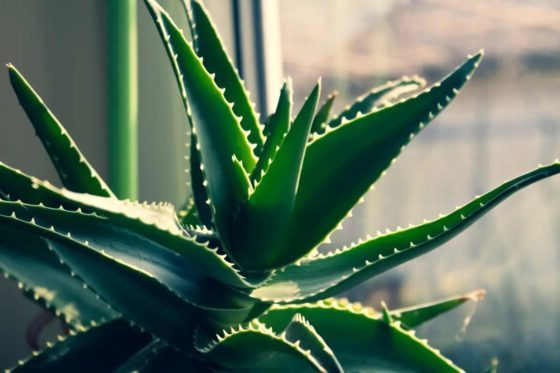Looking for plants that resemble aloe vera? You’ve come to the right place! If you’re a fan of aloe vera’s unique appearance and soothing properties, you’ll be delighted to discover other plants that bear a striking resemblance. These lookalikes not only add beauty to your indoor or outdoor space but also offer their own array of health benefits.
In this article, we’ll explore some remarkable plants that look like aloe vera, so you can expand your botanical collection with captivating alternatives. Get ready to meet some stunning doppelgängers that will leave you in awe. Let’s dive in!
Plants That Look Like Aloe Vera: Exploring Similar Options
Aloe vera is a popular succulent plant known for its numerous health benefits and easy care requirements. Its unique appearance, with long, spiky leaves clustered in a rosette shape, makes it instantly recognizable.
However, if you’re looking for plants that resemble aloe vera but offer something different in terms of appearance or care, there are several options to consider. In this article, we’ll explore a variety of plants that share similarities with aloe vera, providing you with alternative choices for your indoor or outdoor garden.
Read More: About Can You Split A Monstera Plant?
1. Haworthia
One of the closest relatives to aloe vera is the Haworthia genus. These plants have a similar appearance, with rosettes of thick, fleshy leaves and spiky margins. However, Haworthias are generally smaller in size, making them ideal for smaller spaces like tabletops or windowsills.
Unlike aloe vera, which often has green leaves with white spots or stripes, Haworthia species come in a wide range of colors and patterns, including vibrant greens, browns, and even translucent varieties. Some popular Haworthia species include Haworthia cooperi, Haworthia fasciata, and Haworthia attenuata.
2. Gasteria
Gasteria plants are another excellent choice if you’re looking for alternatives to aloe vera. Like aloe and Haworthia, Gasterias are succulent plants with fleshy leaves arranged in rosettes. However, they have a distinctive tongue-like shape, with leaves that are thicker and more triangular compared to aloe vera.
The leaves of Gasteria plants often display interesting patterns and textures, such as raised bumps or tubercles. These plants are known for their resilience and adaptability, making them suitable for both indoor and outdoor cultivation. Popular Gasteria species include Gasteria verrucosa, Gasteria bicolor, and Gasteria glomerata.
3. Agave
Agave plants are a diverse group of succulents that offer a wide variety of shapes, sizes, and colors, making them a fascinating alternative to aloe vera. While some Agave species resemble aloe vera with their rosette form and spiky leaves, others have entirely different growth patterns.
Agaves can range from small, compact plants suitable for indoor cultivation to large, dramatic specimens perfect for outdoor landscapes. One of the most well-known Agave species is Agave americana, also known as century plant, which has striking blue-green leaves and can grow to impressive sizes.
4. Sansevieria
Sansevieria, commonly known as snake plants or mother-in-law’s tongue, are renowned for their air-purifying properties and low-maintenance nature. While their leaves may not resemble aloe vera at first glance, certain Sansevieria varieties exhibit similarities in terms of shape, texture, and overall growth habit.
The leaves of Sansevierias are long, upright, and stiff, often with variegated patterns of dark green and light yellow or white. These plants thrive in a variety of lighting conditions, making them suitable for both indoor and outdoor environments. Some popular Sansevieria species include Sansevieria trifasciata, Sansevieria cylindrica, and Sansevieria fernwood.
5. Echeveria
Echeverias are beautiful succulent plants that come in a wide range of colors, shapes, and sizes, offering a unique alternative to aloe vera. These rosette-forming succulents have thick, fleshy leaves with a waxy texture, often displaying captivating hues of green, blue, pink, purple, or red. Echeverias are well-suited for containers and can be grown both indoors and outdoors, depending on the climate.
They are popular choices for succulent arrangements, as their varied forms and colors create visually appealing displays. Some popular Echeveria species include Echeveria elegans, Echeveria agavoides, and Echeveria pulvinata.
6. Sedum
Sedums, also known as stonecrops, are a diverse group of succulent plants that encompass a wide range of shapes, sizes, and growth habits. While not as similar in appearance to aloe vera compared to some other plants on this list, certain Sedum species can offer an intriguing alternative. Their foliage comes in various forms, including rosettes, trailing stems, and upright clusters.
Sedums are generally resilient and low-maintenance, making them suitable for beginners and experienced gardeners alike. Some popular Sedum species include Sedum spectabile, Sedum sieboldii, and Sedum spurium.
7. Kalanchoe
Kalanchoe plants are another group of succulents that share similarities with aloe vera. These plants often have thick, fleshy leaves arranged in rosettes, similar to aloe vera’s growth habit. Kalanchoe species are known for their vibrant, long-lasting flowers, which can add a splash of color to any indoor or outdoor space.
They are relatively easy to care for and can tolerate a range of lighting conditions. Some popular Kalanchoe species include Kalanchoe blossfeldiana, Kalanchoe tomentosa, and Kalanchoe luciae.
8. Crassula
Crassula plants, also known as jade plants or money trees, are a versatile group of succulents that come in a variety of shapes and sizes. While not closely resembling aloe vera in terms of leaf shape, certain Crassula species exhibit a similar growth habit with thick, fleshy leaves and a compact growth form.
Their leaves are often glossy and can range in color from shades of green to red. Jade plants are popular choices for bonsai due to their ability to develop thick trunks and interesting branch structures. Some popular Crassula species include Crassula ovata, Crassula argentea, and Crassula perforata.
While aloe vera remains a beloved and iconic plant, there are numerous alternatives that offer similar characteristics and visual appeal. From the Haworthia’s miniature charm to the Agave’s striking architectural forms, each of these plants provides a unique option for succulent enthusiasts and gardeners alike.
Whether you’re looking for a plant with similar care requirements or a different aesthetic, exploring these plants that resemble aloe vera can expand your options and add variety to your indoor or outdoor garden. Experiment with different species, colors, and textures to find the perfect plant that suits your preferences and complements your space.
Remember to consider factors such as lighting conditions, watering needs, and available space before introducing any new plants to your garden. With proper care and attention, these aloe vera look-alikes can thrive and become the centerpiece of your botanical haven. Happy gardening!
Read More: About Can Springtails Get Out Of Terrarium?
Frequently Asked Questions (FAQs)
There are a few plants that closely resemble aloe vera, including Haworthia, Gasteria, and some varieties of Agave. Although they may have similar appearances, it’s important to note that they belong to different plant families.
While both aloe vera and Haworthia have thick, succulent leaves, there are some noticeable differences. Aloe vera leaves are usually longer, thicker, and slightly curved, with prominent spikes along the edges. On the other hand, Haworthia plants have shorter, fatter leaves with small white spots and no spikes.
Gasteria plants have fleshy, succulent leaves that are similar to aloe vera. However, unlike aloe vera, Gasteria leaves grow in a rosette pattern and have distinct white dots or lines on the dark green surface. They also tend to be smaller in size compared to aloe vera leaves.
Yes, certain Agave species can resemble aloe vera. One such example is Agave parryi, commonly known as Parry’s agave. It has thick, succulent leaves with prominent spikes along the edges, similar to aloe vera. However, Agave plants typically grow much larger and have a more symmetrical rosette shape compared to aloe vera.
Yes, aloe vera has been widely used for its medicinal properties. It is known for its soothing and healing effects on the skin, often used to treat minor burns, cuts, and skin irritations. However, it is always recommended to consult a healthcare professional before using any plant for medicinal purposes.
Plants resembling aloe vera, such as Haworthia, Gasteria, and Agave, generally have similar care requirements. They thrive in well-draining soil, prefer bright indirect light, and require infrequent watering. However, it’s always best to research the specific care needs of each individual plant to ensure proper growth and health.
Yes, plants resembling aloe vera can be grown indoors successfully. They are well-suited for indoor environments as they can tolerate lower light conditions. However, it’s important to provide them with sufficient sunlight or artificial lighting and ensure proper drainage to prevent root rot.
Yes, plants resembling aloe vera are generally easy to propagate. They can be propagated through offsets or pups that grow from the base of the mother plant. These offsets can be carefully removed and planted in a suitable growing medium to establish new plants. Regular propagation methods such as leaf cuttings or seed germination may also be used, depending on the specific plant species.
Final Thoughts
Plants that look like aloe vera can be a great addition to your indoor or outdoor garden. These plants have similar appearances and care requirements as aloe vera, making them easy to maintain. Some of the plants that resemble aloe vera include Haworthia, Gasteria, and Agave. These plants also offer similar benefits, such as air purification and soothing properties.
Adding these aloe vera-like plants to your collection can provide variety and beauty while enhancing your space’s ambiance. Consider experimenting with these alternatives to aloe vera for a unique and diverse plant collection.
Auto Amazon Links: No products found.
Perfect Plants Christmas Tree Saver 8oz. | Easy Use Xmas Tree Preserver Food | Have Healthy Green Christmas Trees All Holiday Season
$9.97 (as of December 12, 2025 05:04 GMT +00:00 - More info- Product prices and availability are accurate as of the date/time indicated and are subject to change. Any price and availability information displayed on [relevant Amazon Site(s), as applicable] at the time of purchase will apply to the purchase of this product.
Rocky Mountain Goods Christmas Tree Food - 8 oz Tree Preservative - Reduce Needle Drop - Greener Scent - Fir, Pine, Spruce Trees - Extend Tree Life
$9.95 (as of December 12, 2025 05:04 GMT +00:00 - More info- Product prices and availability are accurate as of the date/time indicated and are subject to change. Any price and availability information displayed on [relevant Amazon Site(s), as applicable] at the time of purchase will apply to the purchase of this product.
VICAMB 39.3 Inch Christmas Tree Watering Funnel,Christmas Tree Watering System Device,Long Tree Watering Funnel Spout for Indoor Outdoor Xmas Tree
$16.99 (as of December 12, 2025 05:04 GMT +00:00 - More info- Product prices and availability are accurate as of the date/time indicated and are subject to change. Any price and availability information displayed on [relevant Amazon Site(s), as applicable] at the time of purchase will apply to the purchase of this product.
FirEver Pure Christmas Tree Food | Preserver Additive & Season Extender for Live Xmas Trees | Keep It Green, Reduce Needle-Drop | Miracle Freshness (8 oz)
$14.99 (as of December 12, 2025 05:04 GMT +00:00 - More info- Product prices and availability are accurate as of the date/time indicated and are subject to change. Any price and availability information displayed on [relevant Amazon Site(s), as applicable] at the time of purchase will apply to the purchase of this product.
EZMeetU Christmas Tree Watering Funnel, 47 Inch Flower Shape Adjustable 6 Section Design, Christmas Tree Watering System, Christmas Tree Waterer, Long Funnel Wide Opening Reusable, Plant Watering Tool
$16.99 (as of December 12, 2025 05:04 GMT +00:00 - More info- Product prices and availability are accurate as of the date/time indicated and are subject to change. Any price and availability information displayed on [relevant Amazon Site(s), as applicable] at the time of purchase will apply to the purchase of this product.
Snow Joe Premium Enviro Blend Ice Melt, Green-Coated Deicer Crystals, 50 lb - Safer Melter for Vegetation, Concrete & Metals w/ Anti-Corrosion Calcium Magnesium Acetate
$32.97 (as of December 11, 2025 19:12 GMT +00:00 - More info- Product prices and availability are accurate as of the date/time indicated and are subject to change. Any price and availability information displayed on [relevant Amazon Site(s), as applicable] at the time of purchase will apply to the purchase of this product.
Muddy Mat® Shown on TV Super Absorbent Microfiber Dog Door Mat for Muddy Paws, Non-Slip Washable Pet Rug, Quick Dry Chenille Entryway Carpet, Machine Washable Indoor Outdoor mat, Grey 30"x19"
$24.95 (as of December 11, 2025 19:12 GMT +00:00 - More info- Product prices and availability are accurate as of the date/time indicated and are subject to change. Any price and availability information displayed on [relevant Amazon Site(s), as applicable] at the time of purchase will apply to the purchase of this product.
ivtivfu Rolling Grill Basket, Removable Wooden Handle, 304 Stainless Steel, Nesting BBQ Tools, Smoker Grilling Accessories for Vegetable, Outdoor Cooking Camping, Birthday Gifts for Men Dad Husband
$25.99 (as of December 11, 2025 19:12 GMT +00:00 - More info- Product prices and availability are accurate as of the date/time indicated and are subject to change. Any price and availability information displayed on [relevant Amazon Site(s), as applicable] at the time of purchase will apply to the purchase of this product.
XXXFLOWER Plant Terrarium with Wooden Stand, Air Planter Bulb Glass Vase Metal Swivel Holder Retro Tabletop for Hydroponics Home Garden Office Decoration - 3 Bulb Vase
$18.98 (as of December 11, 2025 19:12 GMT +00:00 - More info- Product prices and availability are accurate as of the date/time indicated and are subject to change. Any price and availability information displayed on [relevant Amazon Site(s), as applicable] at the time of purchase will apply to the purchase of this product.
Zevo Flying Insect Trap Official Refill Cartridges - Fits Both Zevo Trap & MAX Indoor Fly Trap - Authentic Trap+Lock Technology to Catch Gnats, House & Fruit Flys (4 Official Refill Cartridges)
$14.97 (as of December 11, 2025 19:12 GMT +00:00 - More info- Product prices and availability are accurate as of the date/time indicated and are subject to change. Any price and availability information displayed on [relevant Amazon Site(s), as applicable] at the time of purchase will apply to the purchase of this product.











